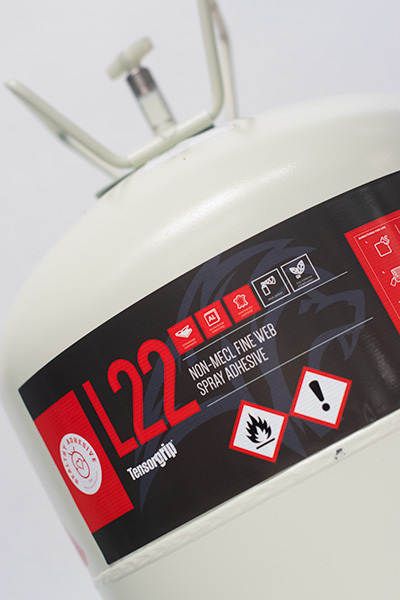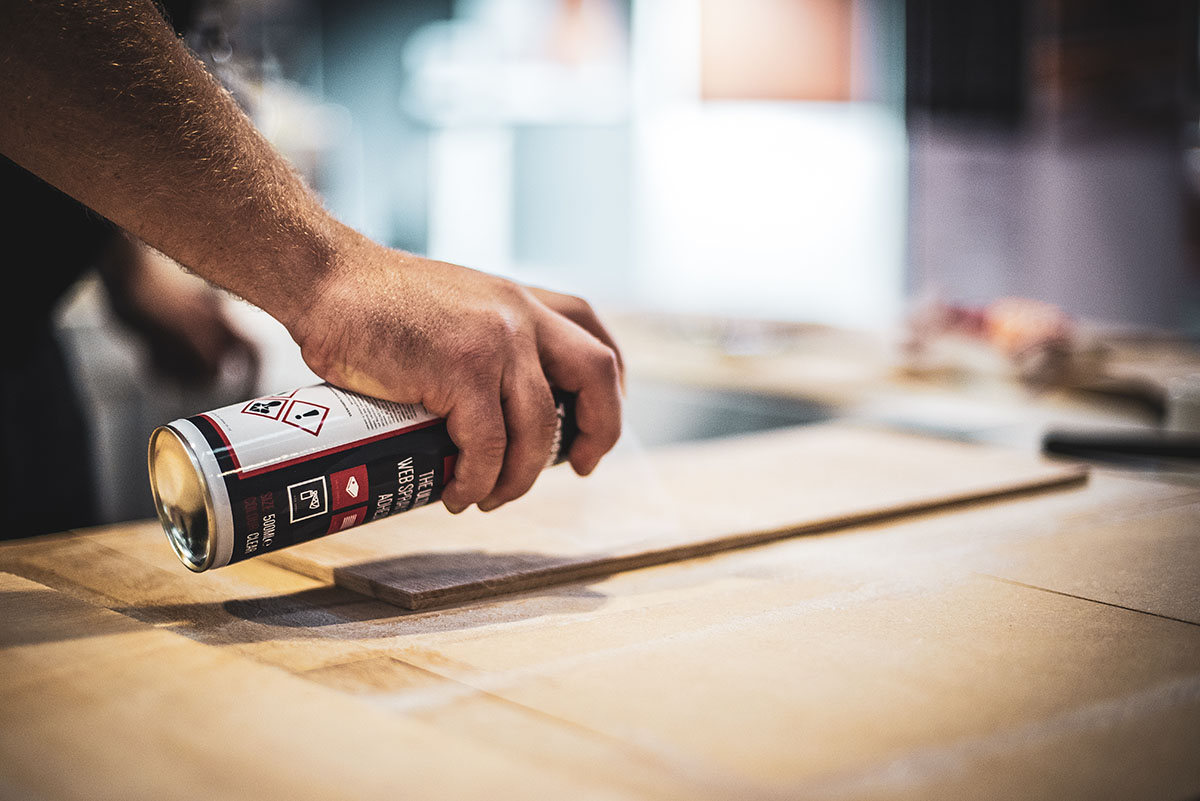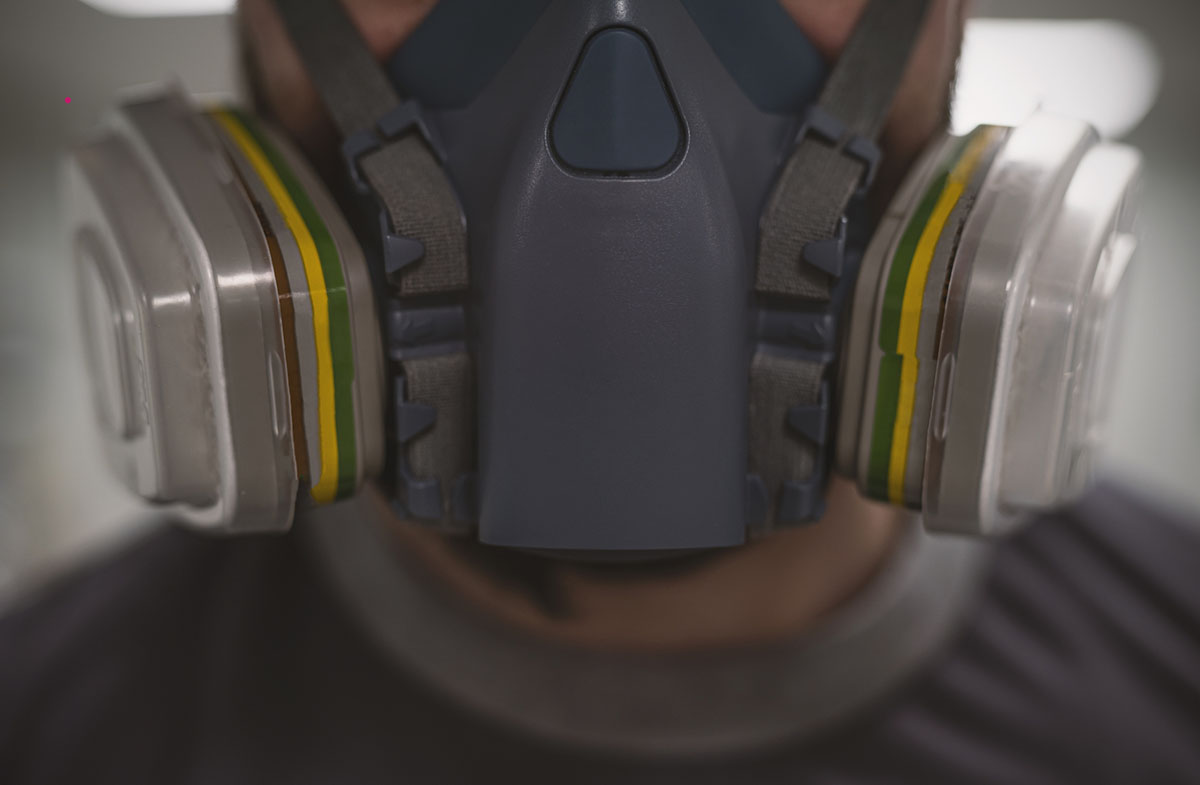As a professional joiner, you’ve probably heard loads of chat about dichloromethane-free joinery adhesives – but how much do you REALLY know about the reasons joiners are making the switch?
There are plenty of scary stats, mixed reports and myths about what it’s like to use a DCM-free formulation – and since nobody really likes change, it can be tempting to stick with your current DCM-based adhesives rather than step into the unknown.
But while you can’t possibly know what it’s like working with a DCM-free adhesive until you’ve tried it, there’s no denying the facts: the risks of dichloromethane exposure are serious, and well-documented. Let’s take a look at what this chemical is, and how it can be harmful.
What is dichloromethane?
Dichloromethane is a chlorine compound that is used as a solvent in many industrial formulations, including spray adhesives. It is clear, colourless and highly volatile, with a sweet smell like chloroform. Dichloromethane is a useful solvent because it evaporates extremely quickly, allowing adhesives and other products to cure rapidly.
Why is dichloromethane harmful?
Dichloromethane is harmful because it is an irritant. The liquid itself irritates the skin on contact while the vapours can irritate the mucous membranes of the eyes, lungs and respiratory tract. Dichloromethane is also very easily absorbed by the alveoli inside the lungs, allowing it to cross over into the bloodstream where it can travel to all the major organs, including the brain.
What are the risks of dichloromethane exposure?
The International Agency for Research on Cancer (IARC) has classified dichloromethane as a suspected human carcinogen. This is because tests on mice and rats have shown that dichloromethane exposure causes animals to develop cancer – specifically of the liver and the lungs. Evidence linking dichloromethane exposure to cancer in humans will continue to be gathered, and this classification will be kept under review.
Cancer isn’t the only risk associated with dichloromethane, however. As previously mentioned, dichloromethane is a powerful irritant that can cause a wide range of physical and neurological symptoms. These include:
- Skin burns and rashes
- Skin numbness or cold patches
- Eye irritation and burns Headaches
- Dizziness Confusion or agitation
- Coughing or wheezing
- Lung disease e.g. COPD Vomiting
- Blurred vision
- Seizures Kidney damage
- Loss of consciousness
The severity and nature of symptoms depends on the method of exposure (by touching or inhaling DCM) and also the level of exposure (how much DCM you come into contact with). Low level exposure over longer periods of time is common in joinery workshops and can increase your risk of developing severe symptoms in the longer term.
Can I use dichloromethane safely?
If you must use an adhesive containing dichloromethane, it’s really important to do so safely. Dichloromethane is an extremely volatile solvent and its molecules can easily pass through porous materials (including human skin), which means it’s vital to use specialist PPE including a tight-fitting respirator mask or air-supplied respirator system, and DCM-resistant protective gloves and goggles. Workshop air filtration / extractor fans are not a substitute for using PPE. You can find out more about working with DCM safely here.

Are DCM-free joinery adhesives any good?
At Tensor, we’ve worked hard to develop DCM-free joinery adhesives that stack up favourably on performance alongside our DCM-based products. Whilst we understand that some specialist application processes may require the aggressive sticking power of a DCM-based adhesive, we now offer a range of contact adhesives and laminating adhesives that offer fast, reliable bonding, without the risks.
However, despite being aware of the risks of dichloromethane – and the existence of safer alternatives – many joiners remain reluctant to make the switch because of the myths surrounding DCM-free adhesives. Let’s look at some of them:
Myth: DCM-free adhesives smell bad
This is a matter of opinion. DCM-free adhesives don’t smell the same as formulas containing dichloromethane – and with its sweet odour, some people think DCM smells nicer than other solvents. But when you consider that this sweet-smelling chemical could kill you, it doesn’t smell that nice! Non-DCM solvents evaporate more slowly than DCM so their smell may hang around a little longer – but with good ventilation, this isn’t usually an issue.
Myth: DCM-free adhesives don’t work as well
We’ve tested our DCM-free adhesives to make sure they perform every bit as well as their DCM-containing equivalents so you never have to sacrifice performance in the name of safety.
Myth: DCM-free adhesives are slow to flash off
Swapping DCM for a less volatile solvent does mean your adhesive won’t flash off quite as quickly – but we’re talking negligible differences. For example, our L40 GP Contact Adhesive flashes off in 1-3 minutes depending on conditions, while our L20 DCM-free GP Contact Adhesive flashes off in 2-3 minutes. When you consider that switching to DCM-free could save each joiner in your workshop from days and days off work due to injury or illness, or even protect them from life-limiting illness, those extra few seconds are so worth the wait.

What DCM-free joinery adhesives are available?
Tensor offers a range of DCM-free adhesives developed specifically for joinery applications like board builds, solid surface, decorative laminating, veneers and more. Whilst we haven’t eliminated DCM from our entire range as yet, that is our long-term goal – and we’re developing new DCM-free formulations all the time.
To find out more about our safer joinery adhesives, or to discuss a specific need, get in touch.
